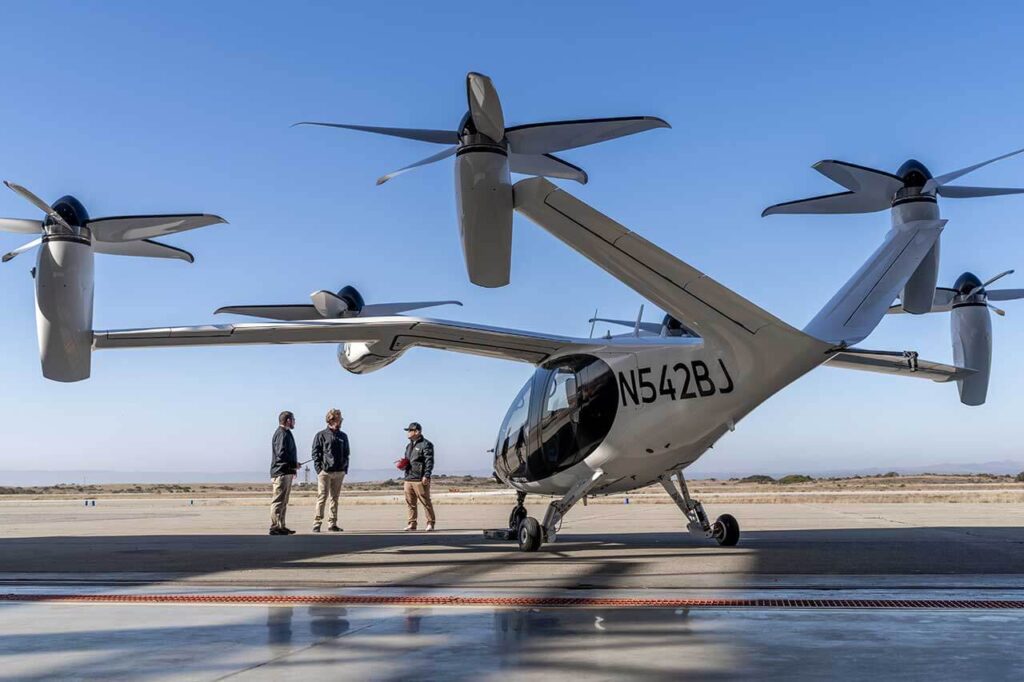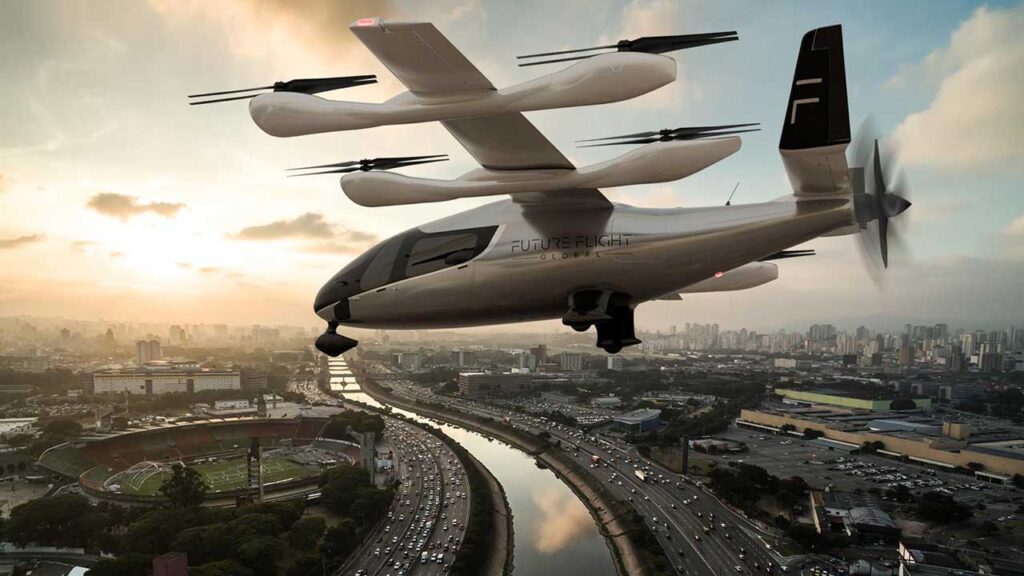The electric vertical take-off and landing (eVTOL) sector stands at a pivotal inflection point in 2025, shaped by rapid technological advances, regulatory shifts, and a new wave of consolidation and operational maturity. Once a field crowded with hundreds of hopeful startups, a handful of global leaders, groundbreaking regional experiments, and a growing body of real-world flight experience now seem to define the eVTOL industry. This article weaves together some of the latest market data, expert insights, and industry narratives to offer a panoramic view of the eVTOL revolution as it enters its most consequential phase yet.

From Hype to Hard Reality: Global Market Evolution
The eVTOL market has evolved from a speculative, hype-driven space into a battleground for a select group of well-funded players. In 2024, despite widespread perceptions of a funding drought, capital investment in the sector more than doubled compared to the previous year, even though it was increasingly concentrated among leading U.S. and Chinese companies.
American companies such as Joby Aviation and Archer Aviation continue to inch closer to regulatory certification, while Chinese firms, buoyed by government subsidies and local incentives, have reportedly begun routine eVTOL operations in select cities. Future Flight Global recently signed several Letters of Intent to purchase Archer’s Midnight eVTOL as well as Embraer’s Eve eVTOL.
This marks the beginning of a new phase in emerging aviation, akin to the consolidation seen in the early days of the automotive and aviation industries, where only the most robust concepts and management teams will likely thrive. This divergence in operational maturity will also likely become a defining factor in global competition.
United States and Europe: Regulation and Cautious Progress
In the U.S. and Europe, the path to commercial eVTOL deployment remains arduous, characterized by rigorous certification processes and evolving safety standards from agencies like the Federal Aviation Administration (FAA) and the European Aerospace Safety Agency (EASA). While these hurdles slow time-to-market, they also ensure a high bar for safety and reliability.
North America leads the eVTOL market, accounting for nearly 39% of global share in 2024, driven by strong investment, regulatory support, and a robust aerospace sector. Several American companies expect to achieve certification and launch limited commercial services within the next two years. They have trained their initial focus on urban air mobility (UAM), airport shuttles, and short-haul commuter routes. The recent Trump administration Executive Order “Unleashing American Drone Dominance,” supports an eVTOL Integration Pilot Program (IPP), in furtherance of test flights in the national airspace system (NAS) and as an extension of the BEYOND program. (See prior AG coverage of eVTOL IPP here). This, combined with the FAA’s publication of a Special Federal Aviation Regulation (SFAR) on powered lift in November 2024, indicate the U.S. intent to move ahead of its international competitors in the advanced air mobility (AAM) space. The upcoming U.S.-hosted Olympic Games in Los Angeles (2028) and Park City, Utah (2034) provide regulators, city planners and manufacturers with achievable targets to get eVTOLs off the ground. (See prior AG coverage of AAM in Olympic cities here).
China: Operationally Bold With Government Backing
In contrast, China’s eVTOL sector benefits from a unique alignment of provincial and national priorities, with billions of dollars in subsidies, infrastructure commitments, and real estate incentives fueling what appears to be rapid progress. Chinese cities already host regular eVTOL flights, which provides invaluable operational data and accelerates the learning curve for both manufacturers and regulators. This operational head start will likely shape global standards and best practices as the industry matures, especially as the U.S. has pulled back from its historical leadership role in international standards bodies. (See AG OpEd about US leadership in standards here)
Middle East: Investment and Operational Experience
The Middle East, particularly the United Arab Emirates (UAE), has positioned itself as a global testbed for eVTOL innovation, by leveraging regulatory agility and significant financial resources to fast-track deployment.
As in the case of China, some Middle Eastern operators are accumulating real-world data from routine eVTOL flights, which allows them to refine their offerings and address practical challenges that remain theoretical elsewhere. For example, U.S. companies Joby and Archer have signed on to fly there. This operational maturity should also influence global standards and accelerate adoption in more regulated markets over time.
Southwest Asia and Africa: Ambition and Flexibility
Southeast Asia and parts of Africa are also emerging as new frontiers. Governments are eager to leapfrog traditional infrastructure constraints and embrace next-generation mobility solutions. Kenya, for example, hosted its first-ever AAM Symposium to discuss issues from financing AAM operations to safety and security. (See AG coverage from Kenya AAM Symposium here).

Industry Consolidation and Funding Realities
While eVTOL concepts and prototypes proliferated in the industry’s early years, 2025 has brought a wave of consolidation reminiscent of the early automotive and aerospace sectors. The capital intensity of the sector is staggering. Estimates suggest up to $40 billion may be required to bring eVTOLs to commercial scale globally, a figure that rivals the cost of developing new generations of conventional aircraft. As a result, only the strongest teams and most compelling business models will likely survive the next wave of industry shakeouts.
Funding remains increasingly concentrated among a few dominant players, particularly in the U.S. and China. Smaller firms and weaker concepts have exited the race. This portfolio approach—where a range of technologies and business models are tested but only a select few achieve scale—mirrors historical patterns in other transportation revolutions.
If You Build It, They Will Come
Several factors jump out as potential differentiators in the global competition to dominate the skies with eVTOLs. Among these, technological advances, a variety of use cases, permissive regulatory environments, public acceptance and infrastructure stand out as factors having the potential to allow eVTOLs to take off or remain sitting on the runway.
Technology: The Heart of the Matter
Technological innovation remains at the heart of the eVTOL revolution. Advances in battery technology, hybrid propulsion systems, lightweight composite materials, and digital tools like artificial intelligence (AI) and digital twins extend range, reduce costs, and optimize maintenance. However, persistent challenges remain relating to battery efficiency, payload limitations, and the integration of eVTOLs into existing air traffic management (ATM) systems.
Markets Beyond UAM: Making a Difference
Technological advances open up new markets. While much of the public attention has focused on UAM, the promise of eVTOL technology extends far beyond passenger transport. The sector is actively exploring applications in cargo logistics, medical evacuation, and even military operations.
Globally, in the U.S. and Europe, initial commercial deployments are expected to focus on airport shuttles and short-haul commuter routes. China and Southeast Asia aim to integrate eVTOLs more broadly into city infrastructure, including partnerships with real estate developers and municipal governments. The Middle East, especially the UAE, continues to leverage its regulatory flexibility and financial muscle to become a global leader in AAM. The country’s ambitions extend into cargo, emergency response, and tourism.
Regulatory Evolution: Divergent Paths
Regulation remains both a challenge and a catalyst for the eVTOL sector’s growth, worldwide. In the West, certification is a lengthy and expensive process, but also a critical safeguard for public safety and industry credibility. In China and the Middle East, more agile regulatory environments—often driven by top-down mandates— enable faster deployment and experimentation. This divergence could shape the global competitive landscape for years to come, as operational experience in less restrictive markets provides a critical edge.
Public Acceptance and Infrastructure
Public acceptance remains a key factor in the pace of eVTOL adoption. Surveys and pilot programs indicate that while there is significant curiosity and optimism about UAM, concerns remain around safety, noise, cost, and privacy. Infrastructure development—particularly the construction of vertiports, charging networks, and ATM systems—will also be essential to realize the full potential of eVTOLs.
Realistic Expectations: Moving Beyond the Hype
The eVTOL industry has entered a defining phase. The industry continues to move beyond hype and speculation toward tangible deployments, real-world operations, and a more mature competitive landscape. The coming years will be shaped by the interplay of technology, regulation, and capital.
Still Some Headwinds
Despite this momentum, the eVTOL market still faces some significant headwinds. Certification delays, infrastructure gaps, and public skepticism remain major obstacles, particularly in Western markets where regulatory scrutiny is intense. Battery technology, while advancing, still imposes constraints on range and payload. The integration of eVTOLs into dense urban environments poses complex logistical and safety challenges.
Winners and Losers
Consolidation will likely continue, with only the most well-funded and strategically positioned companies surviving to shape the next phase of industry growth. As operational experience accumulates in China, the Middle East, and other emerging markets, the lessons learned there will inform global best practices and accelerate adoption elsewhere. Regional leaders will emerge based on their ability to innovate, execute, and adapt.
Rapid Growth Projected
With major regulatory milestones on the horizon and commercial launches expected within the next two years, the sector seems poised for rapid growth. Strategic partnerships between aerospace, automotive, and technology companies will accelerate progress, while government support and public-private collaborations are laying the groundwork for urban air mobility ecosystem
Regardless of which region comes out on top, the promises of eVTOLs in reshaping how people and goods move through cities and beyond is no longer a distant vision—it is unfolding now. While significant hurdles remain, the momentum is undeniable. By 2045, eVTOLs could become as commonplace as taxis and buses, fundamentally changing the way we live, work, and travel.
*This article is based on several presentations from the eVTOL Insights North America Conference.
Market Forecasts and Projections
| Year | Market Size (USD) | CAGR (%) | Projected Fleet | Key Milestones |
| 2024 | $596M–$772M | 31–381 | 355 units | FAA/EASA progress |
| 2026 | $87.6B | 37.21 | — | Commercial launches |
| 2032 | $5.66T | 32.51 | — | Mass adoption |
| 2045 | $280B revenue | — | 30,000 eVTOLs | 3B annual passengers |
By: Dawn Zoldi

